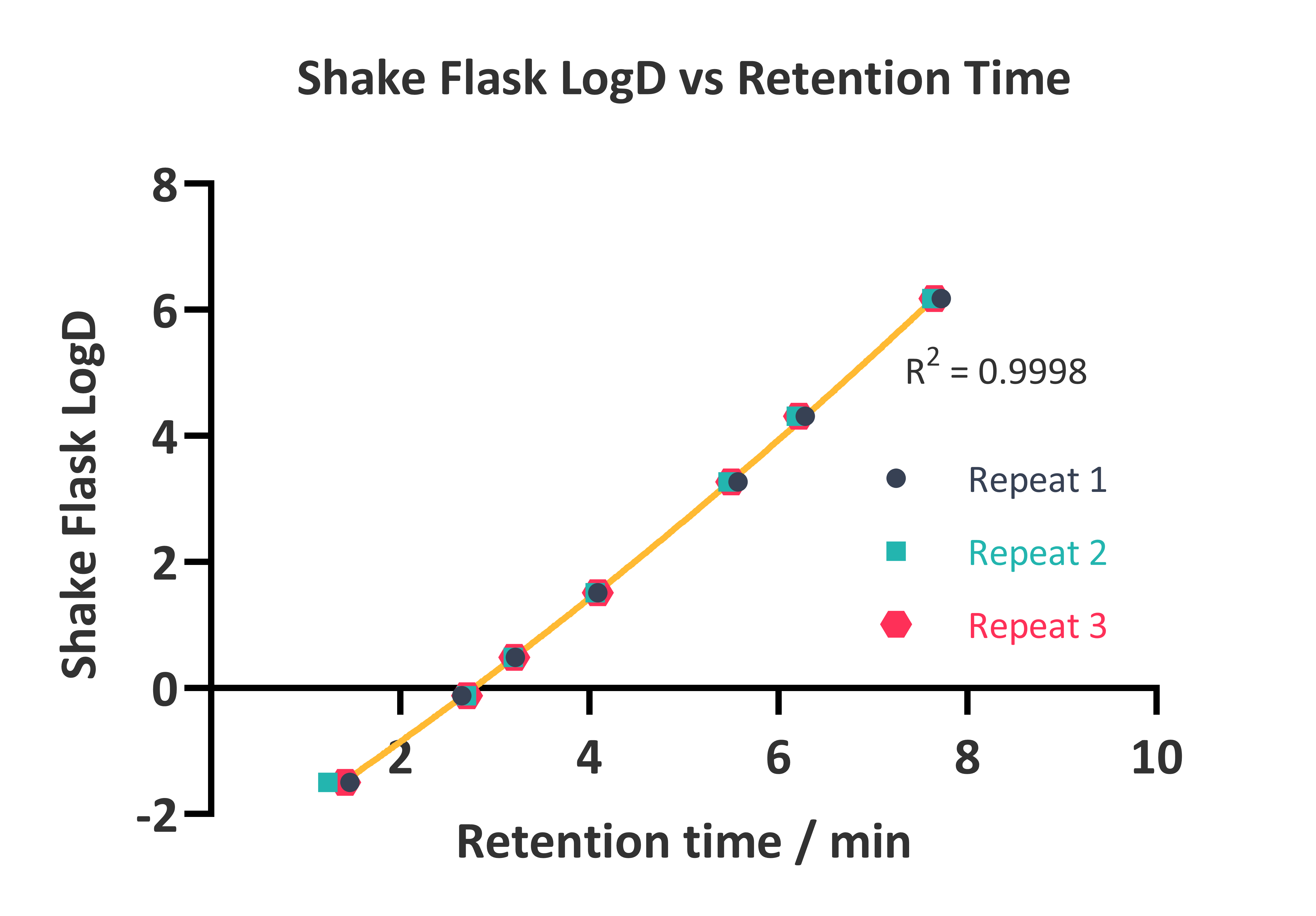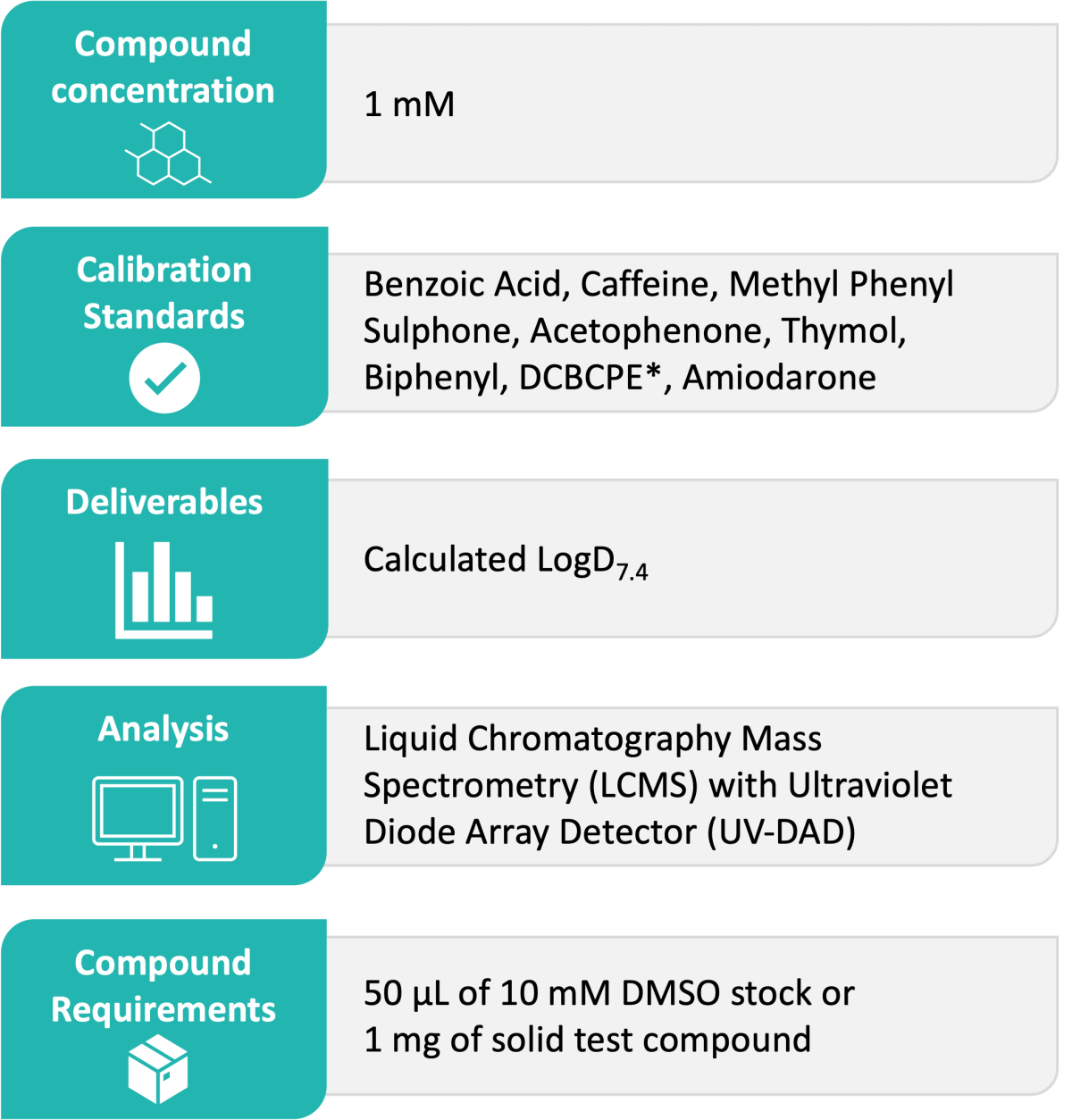- About
-
Solutions
-
Services
- Biosciences
- Chemistry
- Integrated Drug Discovery
- Computer Aided Drug Design
- Hit Identification
- Target Classes and Modalities
- Therapeutic Areas
-
A-Z
- A
- B
- C
- D
- E
- F
- G
- H
- I
- K
- L
- M
- N
- O
- P
- R
- S
- T
- V
- X
-
Services
- Library
- News & Events
- Careers
ChromLogD
Monitoring lipophilicity is paramount in the design of a drug candidate during lead optimisation. Shake flask LogD is widely regarded as the gold standard for generating lipophilic measurements, however, it has limitations when measuring highly lipophilic analytes and requires test compounds to be solid. In addition to shake flask LogD measurements, Domainex offers an alternative method for determining lipophilicity/LogD, chromatographic LogD or ChromLogD, which is a fast, high-throughput approach and can be performed using existing compound stock solutions.
Experimental Procedure:
Domainex’s ChromLogD assay involves preparing a series of calibration standards at 1 mM in DMSO (with well-established shake flask LogD values) and analysing them at pH 7.4, alongside test compounds, using Liquid Chromatography-Mass Spectrometry (LC-MS) with an Ultraviolet-Diode Array Detector (UV-DAD). The standards are used to generate a calibration curve of shake flask LogD against retention time, as shown in Figure 1.

Figure 1. Correlation between shake flask LogD values and retention time for the calibration standard compounds on three separate occasions.
Data Analysis:
The retention times of test compounds are determined and their corresponding LogD value is calculated from the standard curve.
Deliverables:
The results are reported in Excel file format as calculated LogD values. Any relevant comments about compound stability/solubility are also included in the report.
Typical turnaround time from receipt of test compounds to release of data is ten working days or less.

* 1,1-dichloro-2,2-bis(p-chlorophenyl)ethene
Start your next project with Domainex
Contact one of our experts today